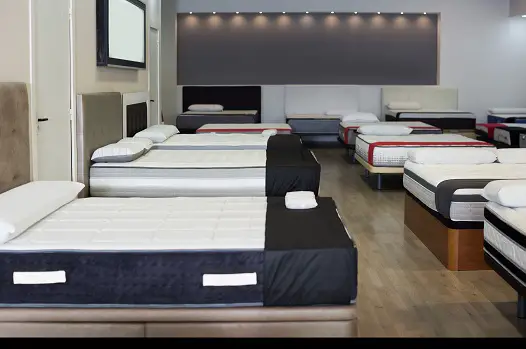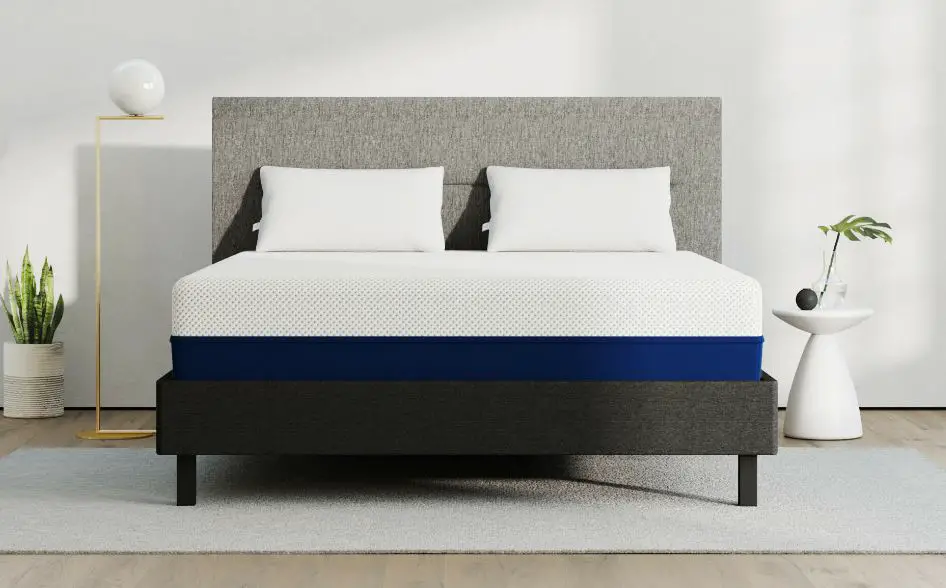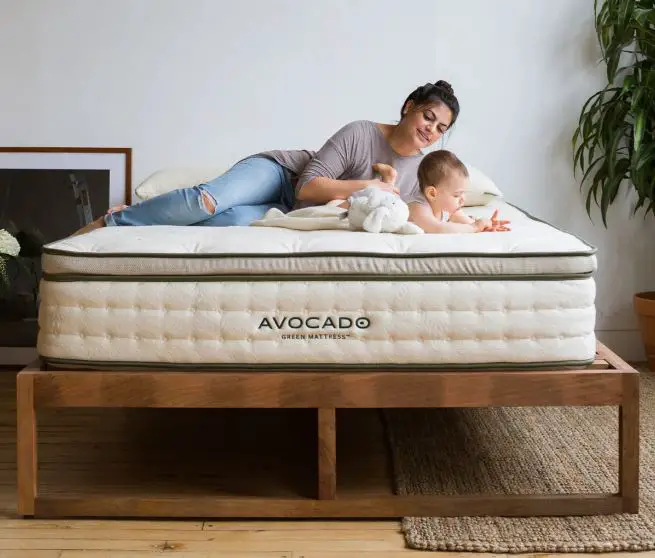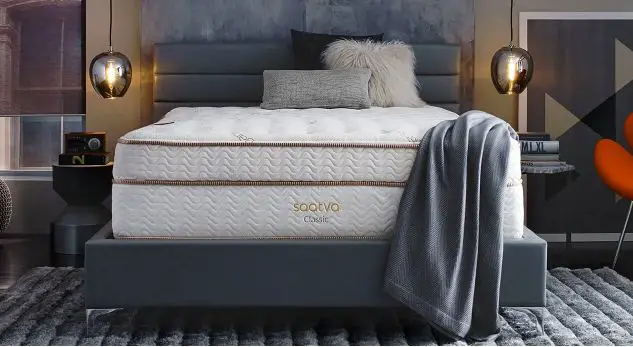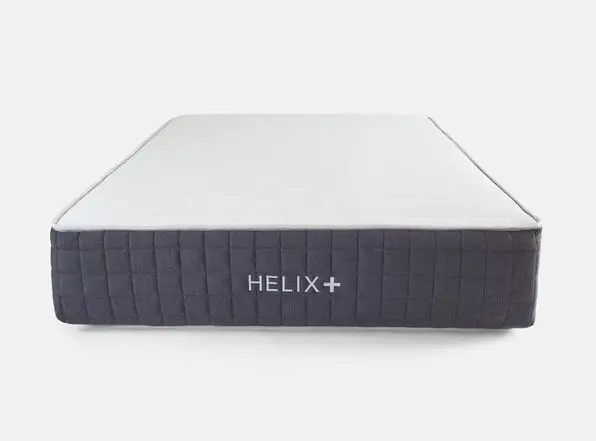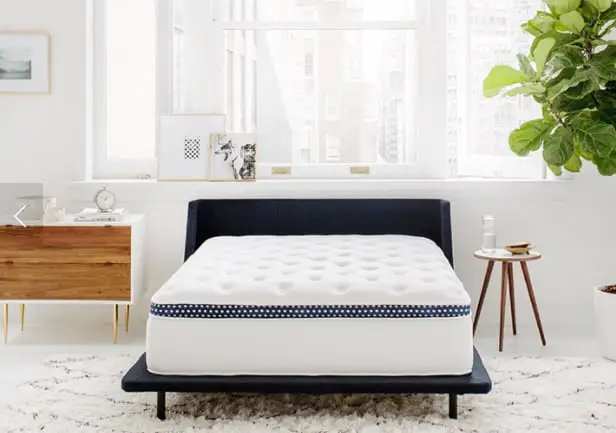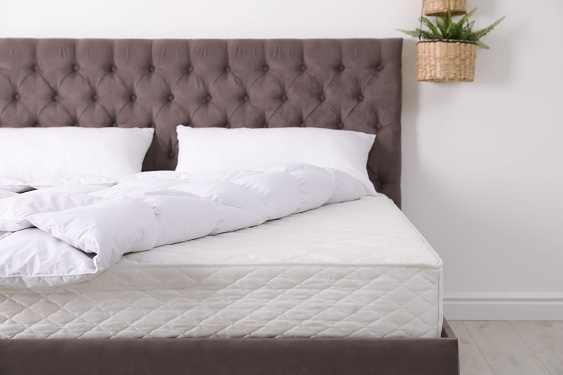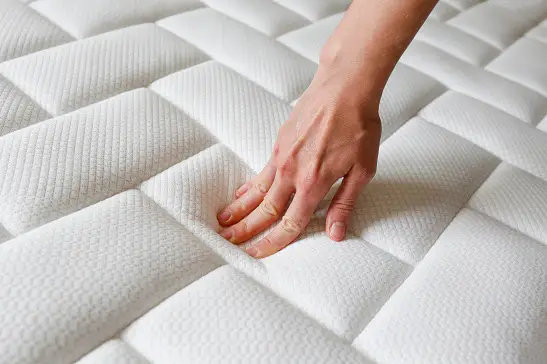Purchasing a Mattress That Will not sag?
You’ve come to the right place.
Sagging is the most common issue people face with mattresses, especially with older ones. If you own a mattress that is more than a few years old, you will know how uncomfortable, unsupportive, and terrible a saggy bed is.
It is not just bad for your overall health and sleep quality, but the dips and trenches cause tension to build up in your spine, forcing you into awkward and eventually painful sleeping positions.
But don’t worry, the solution to this problem is simple: a durable, non-saggy mattress that provides unbeatable support. Sure, even the best non-sagging mattress shows some sign of indentation, but it's structured such that the support lasts for years.
What’s In This Buying Guide
This buying guide rounds up the best non-sagging mattresses currently available on the market. First, the comparison table provides a quick overview of our top picks.
Then, we review all the products in detail and explain their pros, cons, and features.
We also explain why certain mattresses sag and what to look for in a non-sagging mattress.
Lastly, the FAQ section addresses common queries about non-sagging mattresses.
Best Mattresses That Won’t Sag
- Best Overall: Amerisleep AS3
- Best Organic Non-Sagging Mattress: Avocado Green Mattress
- Best Hybrid Non-Sagging Mattress: Saatva Classic Mattress
- Best Non-Sagging Mattress for Plus-Size Sleepers: Helix Plus Mattress
- Best Innerspring Non Sagging Mattress: The WinkBed
| Award | Mattress Type | Material | Firmness Level | Sleep Trial | Warranty | |
|---|---|---|---|---|---|---|
Amerisleep AS3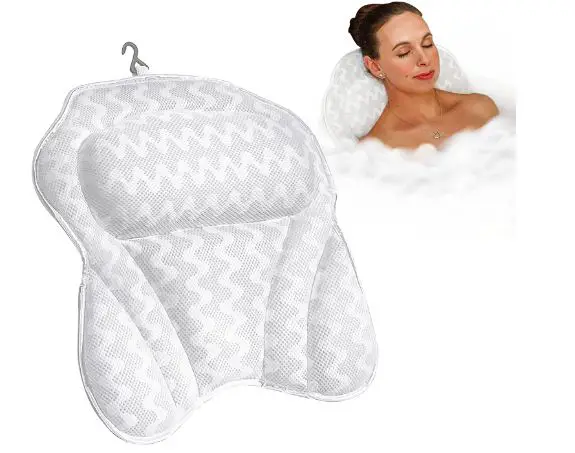 | Best Overall | Hybrid Matters | Bio-Pur® Memory foam with eco-friendly foam affinity layer and Bio Core® base | Medium Firm | 100 nights | 2-yr |
Avocado Green | Best Organic Non Sagging Mattress | Latex Hybrid Mattress | 100% GOLS certified organic latex, 100% GOTS certified organic wool, 100% GOTS certified organic cotton, and up to 1,414 pocketed support coils | Gentle, yet firm | 1-year trial period | 25-year |
Saatva Classic  | Best Hybrid Non Sagging Mattress | Hybrid Innerspring Mattress | Organic cotton, CertiPUR-US® certified premium high-density memory foam, recycled steel individually pocketed coils, High-density foam rails, and 13-gauge tempered steel base coil unit | Multiple Firmness Levels | 180 nights | 15-year |
Helix Plus | Best Non Sagging Mattress for Plus-Size Sleepers | Hybrid Mattress | Memory Plus Foam, Helix Dynamic Foam layers in different | Medium Firm | 100 nights | 10 to 15-year warranty |
The WinkBed | Best Innerspring Non Sagging Mattress | Hybrid Mattress | Tencel cover, gel infused foam top, wrapped pocketed coils, and extra edge support system | Multiple Firmness Levels | 120 nights | Lifetime Warranty |
1. Best Overall: Amerisleep AS3
Amerisleep AS3 takes the top spot because of its eco-friendly construction and pressure-relieving features. This multi-layer hybrid mattress offers unbeatable comfort and support for a restful night’s sleep. Plus, the plant-based foam base is durable and resistant to sagging.
Pros
- Eco-friendly construction
- Comfortable and very responsive
- Suitable for side sleepers, combo sleepers, and heavy sleepers
- Adapts with body movements
- Maintains healthy spinal alignment
Cons
- Expensive
- Not very soft
Our Review
Amerisleep AS3 is one of the best non-sagging mattresses because of its hybrid design. It features three plant-based, eco-friendly foam layers encased within a lightweight and airy mattress cover.
The entire structure is highly sturdy and durable and offers medium-firm firmness,which is suitable for most side, back, and combo sleepers. The mattress can even withstand the weight of heavier individuals without sagging under pressure.
The construction of the AS3 starts with a durable Bio-Core® foam base that is quite sturdy and keeps it non-saggy for years.
Atop the base is the Affinity layer with HIVE®. This zone support layer is soft around the hips and shoulder area but firm under your back, neck, and legs.
The top-most layer is the Bio-Pur® Memory foam that is cooler and more durable than any other memory foam.
2. Best Organic Non-Sagging Mattress: Avocado Green Mattress
Avocado Green Mattress is an organic latex mattress consisting of hybrid layers of cotton, wool, and latex foams. It is free from polyester, polyurethane, and any other toxic fire retardants. You can also choose to purchase it in vegan variation without wool.
Pros
- 100% certified organic mattress
- Durable and resilient
- Affordable
- Suitable for back and stomach sleepers
- Needle tufted by hand
Cons
- Side sleepers might find it uncomfortable
- Squeaks
Our Review
The Avocado latex hybrid mattress stands out for its 100% certified organic construction. It consists of 3 distinct foam layers, each made using organic materials sourced from the company’s co-owned farms.
The Green Mattress is completely non-toxic and offers the finest natural cushioning with a built-in zoned pressure point support system.
The mattress consists of up to 1,414 pocketed support coils thoughtfully arranged in 5 ergonomic zones to provide adequate support and alleviate pressure from different body parts.
Reinforced support around the edges prevents sagging and reduces motion transfer. The 3-inch latex foam comfort layer gives this Avocado mattress a medium-firm feel that suits most stomach and back sleepers.
3. Best Hybrid Non-Sagging Mattress: Saatva Classic Mattress
As one of the first hybrid mattresses, the Saatva Classic Mattress is also famous for its support and pressure relief that suits side sleepers as well as people who suffer from back pain.
This high-rated mattress is available in various firmness levels. With its dual support coil system, this Saatva mattress is one of the most durable bedding products currently available on the market.
Pros
- Customizable firmness
- Unbeatable support and pressure relief
- 180-day sleep trial period
- Free delivery and setup
- Ensures healthy spinal alignment
Cons
- It makes odd popping noises
- Not flippable
Our Review
The Saatva Classic Mattress boasts a coil-on-coil construction that ensures it does not sink or sag. Its classic hybrid innerspring feel is an excellent option for side sleepers and people who suffer from back pain.
The Saatva Classic is constructed to be long-lasting. It is both bouncy and supportive, with three firmness levels to choose from.
The Classic Mattress is a 5-layer structure that delivers restorative sleep.
The base unit consists of 13-gauge tempered steel coils for maximum support and durability. Next, a high-density foam edge surrounds the base for firmness and stability.
On top of these is a layer of individually wrapped coils made from durable 14.5-gauge recycled steel. They contour your body and adequately relieve pressure.
Then, a patented spinal zone active wire and CertiPUR-US® certified premium high-density memory foam further enhances back support. Lastly, the quilted Euro topper contours your body for a relaxing sleeping experience.
4. Best Non-Sagging Mattress for Plus-Size Sleepers: Helix Plus
The Helix Plus Mattress is one of the most affordable non-sagging mattresses. Since it is directed towards heavier and bigger people, it stays firm while providing adequate support and comfort. The multi-foam structure with inner wrapped coils ensures durable and long-lasting performance.
Pros
- Highly affordable
- Suitable for both lightweight and heavy people
- Three comfort layers
- Gel-infused memory foam for temperature regulation
Cons
- Edge support is not great
- It has a slight odor that needs airing
Our Review
Where other Helix mattresses sit at around 10 inches high, the Plus Mattress is directed for heavier sleepers and is 12 inches high. It features a hybrid foam and wrapped coil construction that delivers maximum support while contouring your body for pressure relief.
The Helix Plus boasts a high-density DuraDense foam layer for the stability and support of the entire mattress. Atop this sits hundreds of XL-wrapped coils that cradle and support the sleeper’s weight.
Next, the Helix Plus Mattress features a transition layer of memory foam with a higher IFD that helps provide adequate comfort and support.
The next layer is the unique Helix Dynamic Foam for added firmness. A 4-pound ultra-sense memory foam also regulates its firmness. Lastly, a Helix Tencel Design topper increases airflow to keep you cool and comfortable.
5. Best Innerspring Non Sagging Mattress: The WinkBed
This hybrid innerspring mattress is dubbed “The Best Innerspring Mattress in 2021” by The New York Times’ Wirecutter.
And why not?
This mattress combines a pressure-relieving pillow top with supportive innerspring coils. It is a 14-inch-high structure with a gel-infused layer between the coils for better temperature regulation.
Pros
- Suitable for all types of sleepers
- Made with CertiPUR-US® Certified foam
- Tencel cover is completely natural
- Anti-sag edge support
- Available in different firmness levels
Cons
- A bit too high
- Some buyers find it springy
Our Review
If you are partial towards innerspring mattresses, you will find the WinkBed a suitable option. It features a supportive yet comfortable design that helps relieve the backache that most stomach and back sleepers often experience.
The WinkBed is great for combination sleepers who change positions throughout the night since it provides proper support to side sleepers. Plus, if you tend to overheat while sleeping, the cooling Tencel cover and the gel-infused layer between the innerspring coils help you keep cool.
The entire structure rests on a set of supportive pocketed coils, zoned to provide optimal support. The coils are thick around the midsection and sparse around the head and feet, so they provide adequate support to your entire body.
An extra-edge support system enables you to sleep right on the edge of the bed without falling off. Next is a pillow top comfort layer infused with gel SupportCell foam. The foam helps relieve pressure on your joints, while the gel infusion improves airflow across the mattress.
The WinkBed is topped off with a quilted cooling and breathable Tencel cover. It is great for hot sleepers and offers enjoyable initial pressure relief.
What Causes a Mattress to Sink/Sag?
When it comes to mattresses, sagging is inevitable. However, some mattresses tend to sag earlier than others.
There are many reasons for the dips and unevenness to develop, such as:
Low-quality materials
The materials used in the construction of the mattress have a strong impact on its sagginess. That’s the biggest reason why experts recommend steering clear of cheap-quality mattresses.
They may cost less, but they don’t provide optimum support to your body or even stand the test of time in the long run. The cheap spring coils and foam fills are not durable enough to support you and end up developing sags because of unequal weight distribution.
And despite the low upfront cost, the total cost continues to add up because you have to constantly replace cheap mattresses with new ones, eventually costing you much more than a single durable mattress made of high-quality materials.
Low maximum weight
Another reason for a mattress sagging is its low weight capacity. Imagine a balloon. When the quantity of air you blow into it is larger than its capacity, it pops. Similarly, when the total weight on the mattress exceeds its maximum weight capacity, it starts to sag.
You should choose a mattress with a higher weight capacity because it is more durable and resistant to sagging.
Improper usage
Using a mattress for purposes other than resting and sleeping can seriously damage its fill. It is fairly common for kids to jump on the bed. The practice may initially seem harmless, but it can lead to the development of dents, dips, and spring coils sticking out that ruin the layering of the mattress.
Other improper uses include spilling liquids, flipping an unflippable mattress, not flipping a flippable mattress, or leaving it in the box for too long. Doing so creates dents and unevenness that damages its overall integrity.
Laying on an uneven mattress leads to backache, poor sleep quality, and tiredness. You should always take care of your mattress and put it to proper use.
Poor foundation
Your bed’s foundation also plays a vital role in making any mattress saggy or non-saggy. If it is poorly constructed or incompatible with your mattress, it may result in sags.
In fact, using the wrong foundation voids the warranty for most mattresses. So, you won’t be able to take advantage of the manufacturer’s warranty.
Improper mattress foundations include bed frames without slats or slats more than 3 inches apart or box springs for any non-innerspring mattress.
And if you didn’t know already, placing your mattress directly on the floor also threatens its integrity because then dirt, mold, and mildew can build up, breaking the mattress down.
Uneven load
Uneven weight distribution over the mattress can also cause lumps to develop. If you use only one side of the mattress, it will wear down faster than the other side because it bears all the load without ever getting a break.
So whether you are a solo sleeper or share your bed with someone, make sure to keep changing sides, rotate, and flip the mattress every now and then to minimize the sagging and wear. If your mattress is not flippable, simply rotating it will also help keep the wear under control.
What Are the Implications of Sleeping on a Sagging Mattress?
A saggy mattress is not only unsightly, but it is also downright unsupportive. Sleeping on a saggy mattress causes your muscles and joints to ache along with other symptoms like headaches, tiredness, poor sleep quality, and sometimes allergic reactions too.
Here are some implications of sleeping on a sagging mattress:
Lower-back pain
Whether you are a back sleeper or a side sleeper, inadequate support from the mattress leads to terrible lower back pain.
The lumpiness of the mattress causes your body to lie unsteadily, which puts a lot of pressure on your back because some parts receive support and others don’t.
Laying in such an uncomfortable posture throughout the night leads to back pain and soreness all over the body.
Numbness
Numbness either happens when your body gets an inadequate amount of blood supplied to it, or your nerves are compressed, cutting their connection to your brain.
A sagging, uneven mattress misaligns your spine. This compresses some major nerves and blood supply vessels to your body parts, constricting the circulation and making different body parts like the hands or feet feel numb.
Headaches
When your spine is misaligned, it also cuts off the supply to your neck and shoulders. When this happens, the blood and nerve supply to your head becomes constricted, leading to headaches and migraines.
Sleeping on a lumpy mattress sets off this vicious cycle. It does not support your spine, makes your neck or shoulders feel numb, and causes headaches that make it difficult to sleep. And not sleeping or poor-quality sleep further increases your headache.
Negative mood and sadness
A restful sleep relieves your tiredness and makes you feel fresh. However, sleeping on a sagging mattress usually means poor sleep quality, resulting in you waking up feeling more tired.
When you feel tired, you lose your energy and motivation. Your mood worsens, and sadness engulfs you, which also decreases your productivity.
Improper Sleep
Sleeping on a lumpy mattress is very much like walking on a bumpy road. You’ll remember how much your feet hurt afterward if you have ever done that.
A saggy mattress makes your back and muscles sore, leading to poor sleep quality and other related issues.
Other Serious Medical Issues
Saggy mattresses are usually the old ones that have been in use for quite some time. Moreover, they are often also hosts to a hoard of harmful allergens like dust mites, dander, mold, and mildew. These can trigger allergic reactions ranging from red eyes and runny nose to difficulty in breathing and many more.
A sagging mattress makes it difficult to fall asleep. You keep lying, taking a long time to become comfortable, and when you finally fall asleep, you keep waking up during the night due to feeling stiff and uneasy.
Lumpy mattresses sometimes also trigger insomnia that leads to numerous other issues. You become irritable, anxious and start experiencing memory loss, headaches, and migraines.
Features to Consider When Purchasing for a Mattress That Won’t Sink
If your mattress is unsupportive because of low-quality foam fill or coils, it is bound to become saggy over time. A mattress that caves in is not only uncomfortable to lay over, but it is also not conducive to a good night’s sleep.
That’s why you should always check the materials, along with other important features such as:
Mattress Type
There are different types of mattresses currently available on the market. Each type is made with different materials, so how much it sags and how well it supports your weight varies accordingly.
To help you pick the right no-sag mattress, here are the types you will come across:
Memory Foam Mattresses
Memory foam mattresses are designed such that they respond instantly to pressure and contour to the curves of your body for maximum support.
They are very soft and conforming, so people who suffer from joint pain find relief from the pain and enjoy a reinvigorating sleep on a memory foam bed.
This type of mattress comes in a wide range of firmness. You can choose from ultra-soft to firm according to your body type and sleep style. If placed on a proper foundation, a memory foam mattress can last between 8 and 10 years.
You’ll also find memory foam as a top layer of a hybrid mattress, where the firmer foam forms the base while the soft memory foam serves as the top layer.
Polyurethane Foam Mattress
Polyurethane foam or polyfoam is the cheapest foam fill used in mattresses. It is made from compounds derived from petrochemicals and is commonly used in mattresses and mattress toppers.
Because of its inexpensive cost and easy compression, many manufacturers now use a spring coil base instead of a polyurethane foam.
Although it is also available in various densities, ranging from a soft and springy low-density variation to a firmer and durable high-density one, even the densest polyfoam is less dense than memory foam, making it less durable in the long run.
You will find many polyfoam mattresses with low price tags. But remember that these are not long-lasting and will disintegrate within a year.
Air Mattresses
Air mattresses are often referred to as airbeds or blow-up beds. They are portable and usually work without a foundation. They are made using polyvinyl chloride (PVC) or textile-reinforced urethane plastic or rubber that inflates when air is blown into them.
In their deflated form, air mattresses are very compact and lightweight. You can easily take one with you on outdoor trips and neatly store it away when not in use.
Air mattresses are primarily used to prevent pressure injuries. They improve blood circulation and offer better pressure relief to sleepers.
As an air mattress deflates, it not only becomes saggy but also loses its firmness. You should keep your air mattress away from sharp objects as they can puncture the airbed, causing it to deflate and become saggy.
Water Mattress
A water mattress, often also referred to as a waterbed or a floatation mattress is a mattress filled with water. It is usually made with vinyl filled with water for firmness and support.
Water mattresses sometimes also contain baffles to provide maximum support with minimum movement of the bed.
They are great for absorbing pressure on your shoulders, hips, and knees and on your buttocks if you sleep on your back. They are also ideal for people who suffer from hay fever and other types of allergies.
There are two types of waterbed mattresses: hard-side and soft-side waterbed mattresses.
Hard-side ones have a wooden frame to hold the mattress and prevent it from bulging out. Soft-side waterbed mattresses look like standard bed mattresses and can be used with your existing bed frame or box spring.
Latex Foam Mattress
A latex foam mattress is made with the sap of the rubber tree. It has a slight bounce and tends to keep the body lifted.
Latex foam mattresses are great for heavier people because they offer maximum support and make it easier to change your sleeping positions throughout the night. They are typically available in a medium firmness level that most back and stomach sleepers find comfortable.
Some brands also provide it in soft and medium comfort levels too.
Latex is very durable. The highest-quality latex mattresses last anywhere between 12 and 15 years without sagging. Like memory foam, latex foam is also used as a comfort layer over an all-foam mattress or even as a top layer in hybrid mattresses.
Hybrid Mattresses
Hybrid mattresses are called so because they consist of a 2 to 3-inch foam top layer and a spring coil base.
Different manufacturers use different types of foam for the comfort layer, including the memory and latex foams for creating different firmness and comfort levels.
They usually feature individually wrapped spring coils that allow them to move independently and provide accurate contouring according to the sleeper’s body shape.
The coils around the lumbar region are usually thicker for added support, while those around the sensitive joints are kept thin for better pressure absorption.
Depending on the top layer's foam, a hybrid mattress can last from 8 to 10 years without sinking.
Innerspring Mattress
Although innerspring mattresses lost notoriety since memory and latex foams became more popular, they are still a common choice for a non-sagging mattress.
While they are more affordable and don’t retain heat in the same way foam mattresses do, innerspring mattresses are not as durable and long-lasting as hybrid, memory foam, or latex mattresses.
Their coils tend to bend or break, creating divots, sagging, and lumps. Also, the inner comfort layer makes them firmer, which creates pressure points for side sleepers, lightweight individuals, and people who suffer from chronic pain.
Materials
Although it may seem like an obvious starting point, you’ll be surprised at how easy your shopping experience becomes once you understand how different materials respond to pressure.
For example, polyfoam is nowhere as durable as memory or latex foam, while memory foam is longer lasting than latex one.
Spring coils also play a major role. Steel coils bring a lot of heft to a structure and tend to last longer than pocketed or individually wrapped coils.
The knowledge about different materials and their comfort levels helps you identify the right type of mattress for yourself. This way, you can easily purchase a supportive and durable mattress that serves you for long without dipping or caving in.
Size
The size of the mattress is an important concern because you don’t want to end up with a mattress that is too big or small for your bed frame. Always measure the size of your bed frame beforehand, so choosing the right size becomes easier.
Mattress Firmness
Many people believe that softer mattresses sag faster than firmer ones. However, this is not true.
Sagging happens due to various reasons like the ones mentioned above.
You should always look for a comfortable and supportive mattress for your body, regardless of its firmness level. If a soft mattress works for you, go for it. And if you find a firm bed more comfortable, don’t hesitate to buy it.
Sleep Positions
Sleep positions also sometimes also contribute to a sagging mattress. Side sleepers usually find mattresses with soft to medium firmness more comfortable because they protect the joints from pressure points, allowing them to wake up more rested.
Back sleepers benefit more from a firmer mattress because they distribute the weight evenly and stop the hips from sinking too deep into the mattress.
Stomach sleepers sleep with their head and hips arched upwards, which exaggerates the spine’s curvature. This tightens the muscles, leading to back and neck pain.
We strongly suggest against stomach sleeping; however, if you are uncomfortable in any other position, a firm mattress will keep your body in line.
Combination sleepers tend to change their positions throughout the night, which is why a medium-firm mattress is an excellent choice for its mix of support and comfort.
Warranty & Price
Choosing the highest quality mattress that falls within your budget is always the right decision. You should bear in mind that mattresses are expensive, so set a reasonable budget for your purchase. But if you are on a strict budget, check out our buying guide for the best mattresses under $500.
When it comes to warranty, most manufacturers offer generous warranties to cover sagging and indentations. However, only a few covers sag beyond a certain depth.
If this is the case, look for a mattress that offers a warranty for sagging beyond 0.75 inches as dents of this depth change the structure and support of the mattress.
Also, remember that using improper foundation for your new mattress also voids the warranty, so be careful about using the right foundation as suggested by the manufacturer.
Frequently Asked Questions
How can I tell if my mattress is sagging?
The easiest way to tell if your mattress is sagging is by using something flat like a yardstick. Lay it across the bed’s surface and look for gaps and dents underneath. If there are many of them, you should do something about it.
Is it true that all mattresses sag in the middle over time?
Yes, it is true that all mattresses sag over time – not just in the middle, but often in two or three spots. The area of the mattress that bears the maximum weight tends to give way after some time. That’s why manufacturers suggest changing places and rotating the mattress to preserve its firmness.
How can I prevent my bed from sagging?
Mattresses tend to sag after some time. However, a few strategies can prevent yours from sagging quickly.
You can top the mattress with a mattress topper, change your sleeping position and place, rotate or flip the mattress every now and then, or even replace the entire foundation to provide your mattress with adequate support.
How much sagging is acceptable in a mattress?
Although most sags and indentations are harmless, most experts suggest that indentations below one inch are uncomfortable for most sleepers. Some manufacturers go a step further and offer warranty coverage for sags deeper than 0.75 inches.
Is it possible that my bed frame causes the mattress to droop?
Yes, your bed frame can cause your mattress to droop. This holds true, especially for king and queen mattresses. If your bed frame does not have enough legs to support the weight of your mattress, it will ultimately cause the mattress to sag.
Final Verdict: What is the best mattress that won’t sag sold today?
The best non-sagging mattress should be supportive and long-lasting, providing years of service without needing any replacement or frequent repairs.
For us, the Amerisleep AS3 is just that- the best mattress that won't sag. It features a hybrid design made out of eco-friendly materials for both support and sustainability.
But if you want a genuinely organic option, check out the Avocado Green Mattress. It boasts a certified organic latex construction with pocketed coils for your support and comfort.
And if you want a mattress for heavier people, go for the Helix Plus Mattress. This durable and sturdy hybrid foam and wrapped coil construction contours your body for adequate pressure relief.
Affiliate Disclosure
Affiliate Disclosure: I may earn a small commission (at no cost to you) if you purchase a mattress after clicking a referral link or using a coupon code on this site. That said, all content and opinions on this site are my own and are NOT affected by these payments.
This site participates in the Amazon Services LLC Associates Program, an affiliate advertising program designed to provide a means for sites to earn advertising fees by advertising and linking to Amazon.com.
*Amazon and the Amazon logo are trademarks of Amazon.com, Inc, or its affiliates.

